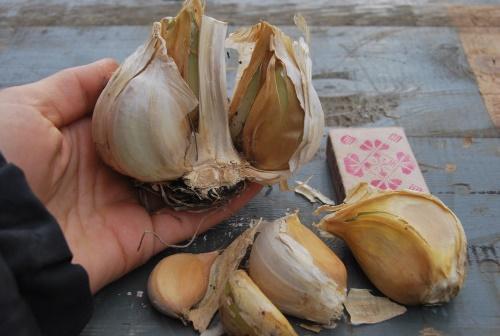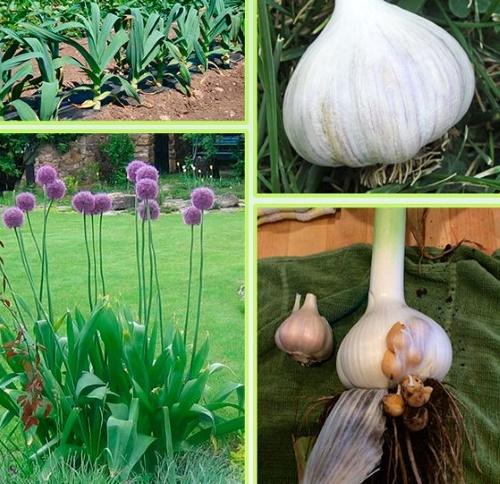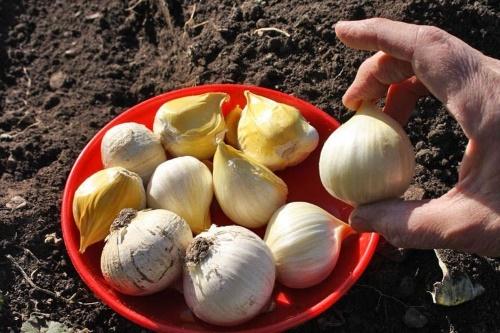When to plant Rocambolle garlic and what kind of culture is it
 Fans of spicy cultures have long appreciated Rocambol with its giant heads and mild garlic flavor. Knowing how and when to plant the Rocambol garlic, you can provide them not only for your family, but also for all neighbors. High productivity due to its large size and unpretentious care make this crop the most popular among gardeners. It is no more difficult to grow it than regular garlic or onion, but there are still some nuances.
Fans of spicy cultures have long appreciated Rocambol with its giant heads and mild garlic flavor. Knowing how and when to plant the Rocambol garlic, you can provide them not only for your family, but also for all neighbors. High productivity due to its large size and unpretentious care make this crop the most popular among gardeners. It is no more difficult to grow it than regular garlic or onion, but there are still some nuances.
Characteristic features of Rocumball

In the scientific literature, the culture is known as the hairstyle. In the people, it has many names, among which: elephant, Egyptian or Lebanese onion, carom, Egyptian wild garlic, snake or horse garlic.
Towards the middle of summer, Rocambolle releases a flower arrow with beautiful large inflorescences-balls, consisting of small purple bells. Its length can reach 1.5 m, and in appearance it is similar to the flowering of ordinary garlic. However, almost all varieties of onion are limited to this and do not give seeds. But such a decorative flowering allows you to use the plant not only in garden beds, but also in a flower bed.
Being a perennial, in the first year of cultivation, the elephant onion forms a single-toothed head resembling an onion. Its weight is about 50 g. In general, this is already a full-fledged crop, ready to eat, but it is better not to dig out the bulb. Then in the second year it will double in size, giving a single-toothed head. In some cases, most often in warm southern climates, several cloves may even set in the second year.
But Rocambol will be able to show all its "power" in the third year of cultivation. In early autumn, large heads ripen, like garlic, with 4-8 large teeth. The total weight of such a head is on average 300 g. There are also varieties with a root crop weighing up to 0.5 kg. The culture reproduces by cloves or children, which are formed in the lower part of the head, at the bottom.
When to plant Rocambolle garlic
 The cultivation technique is similar to that of garlic. There are two ways to plant Egyptian onions:
The cultivation technique is similar to that of garlic. There are two ways to plant Egyptian onions:
- In spring, late March - early April. In this case, in the current season, the plant will tie a large one-tooth.
- Near winter, in September - early October. Winter Rocambol in a warm climate can already produce a full-fledged bulb next fall.
Autumn planting is practiced mainly in the southern strip. In the central and northern regions, the garlic is planted in spring.